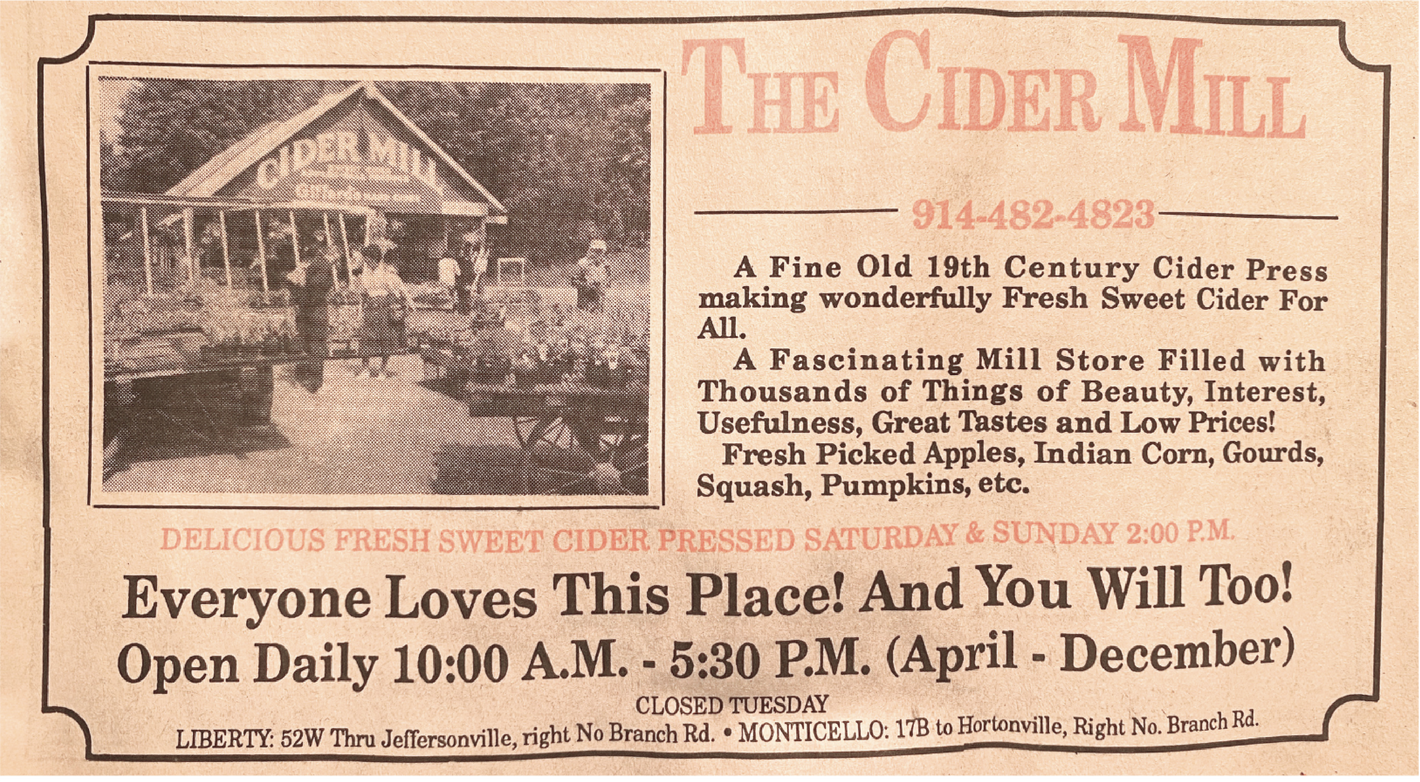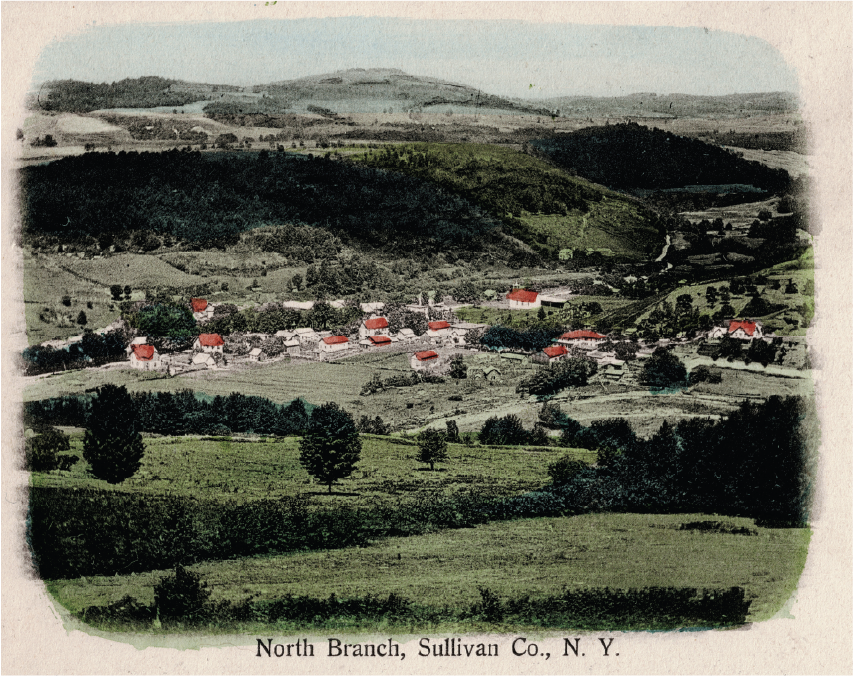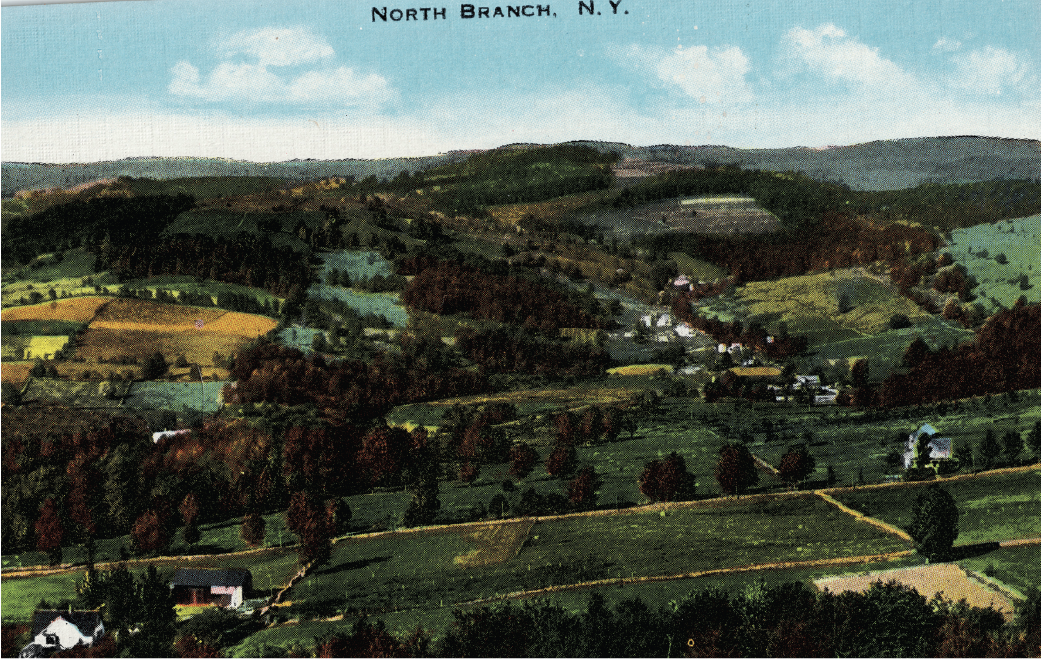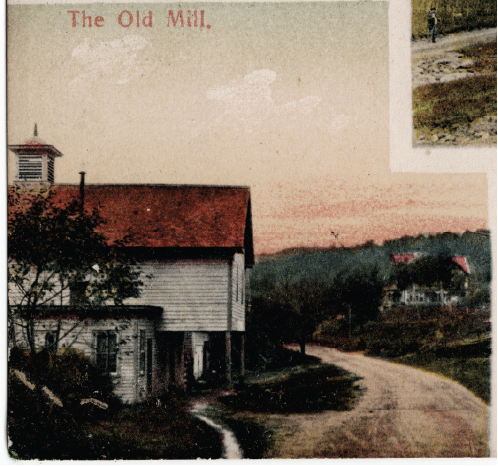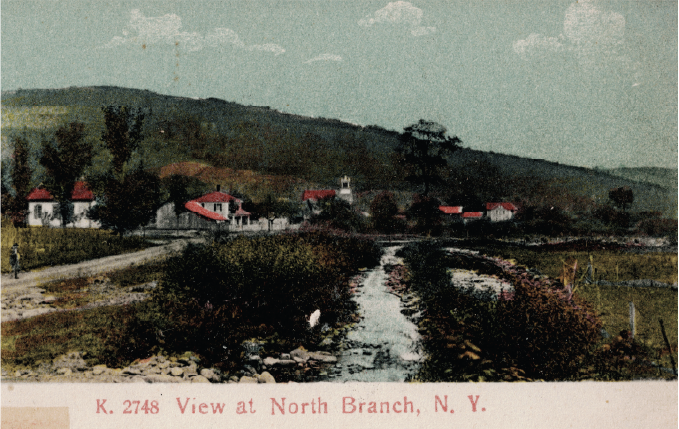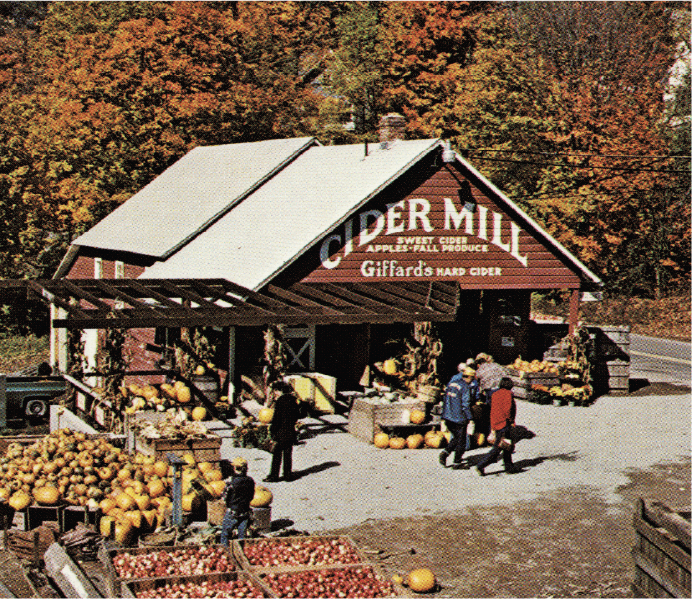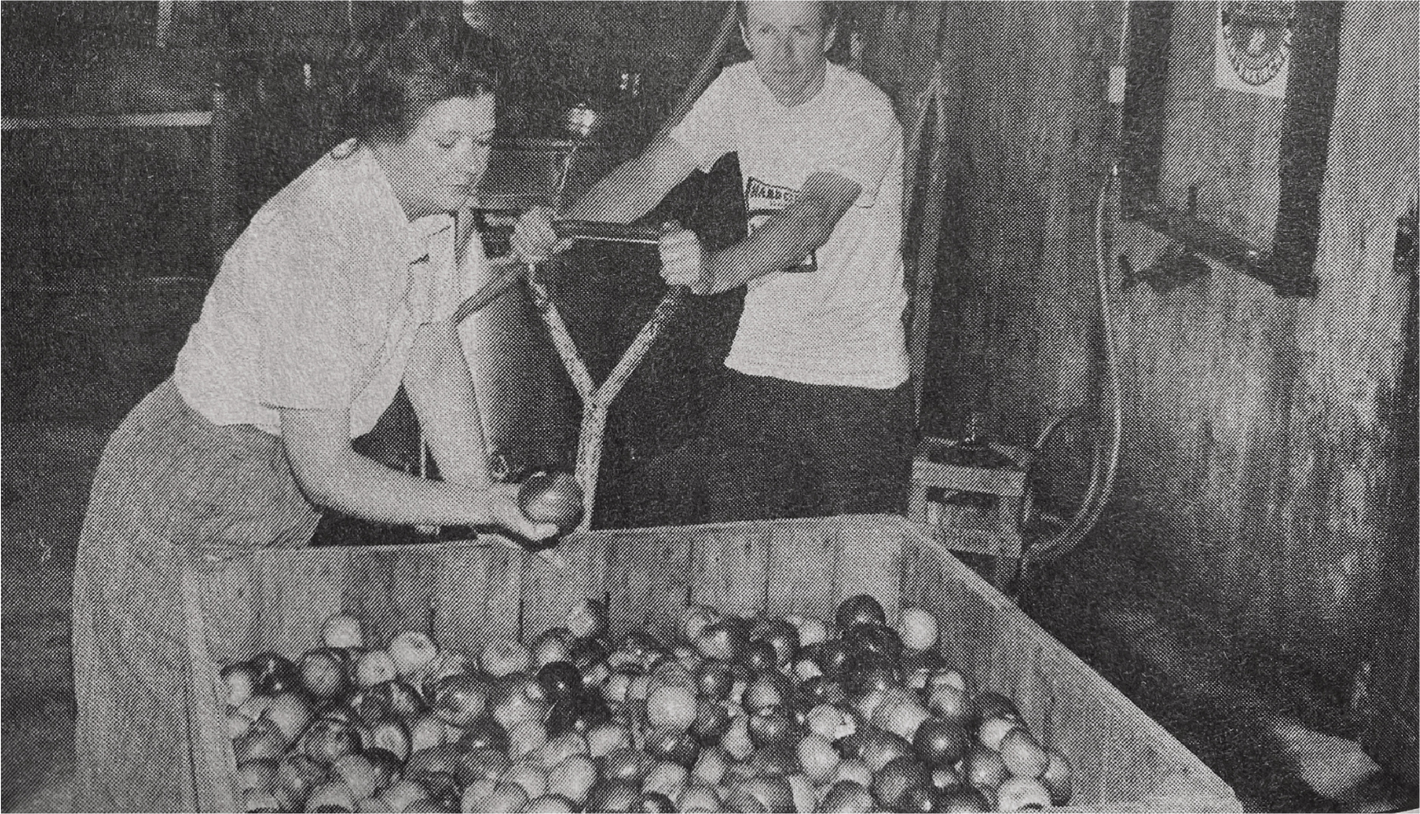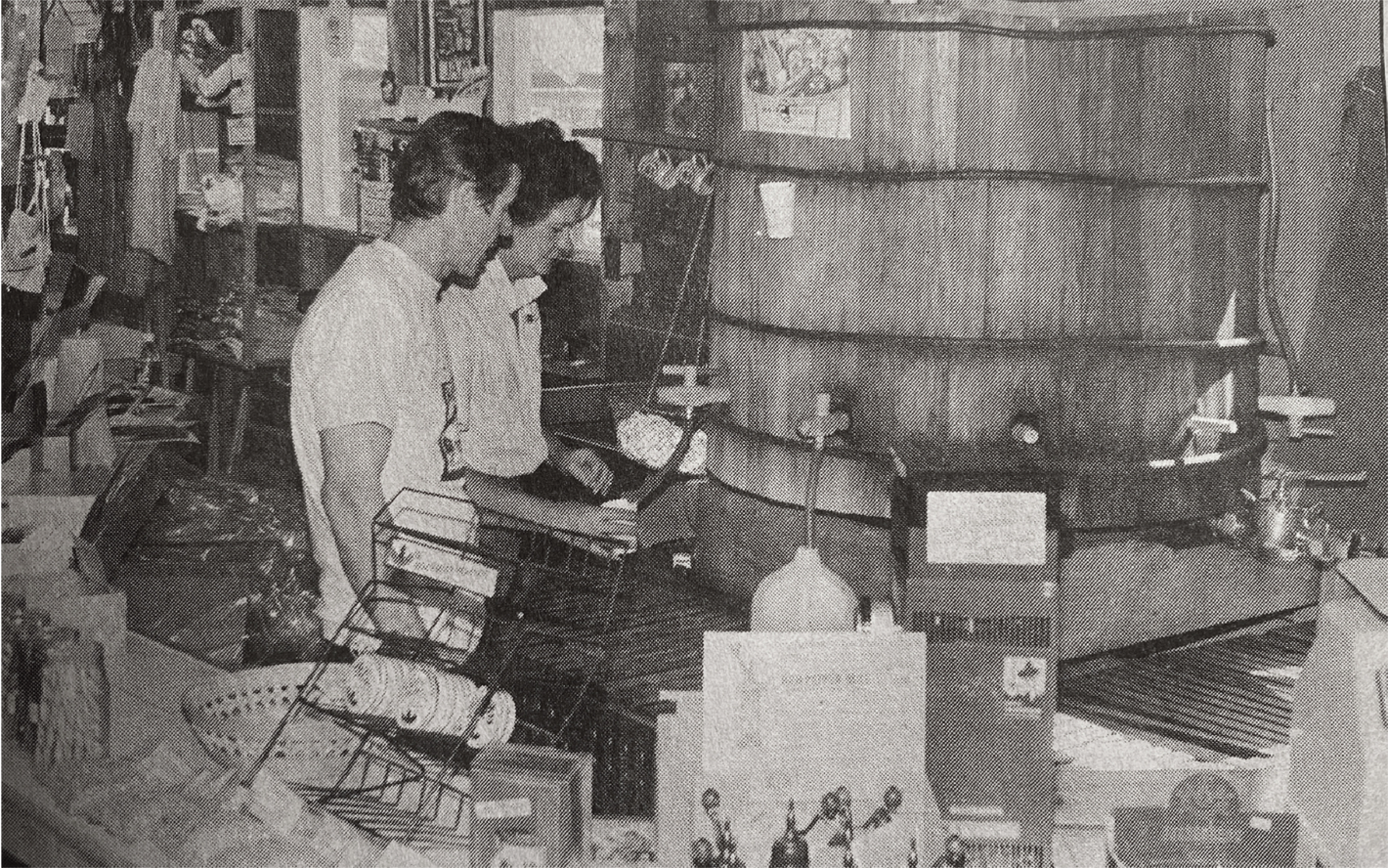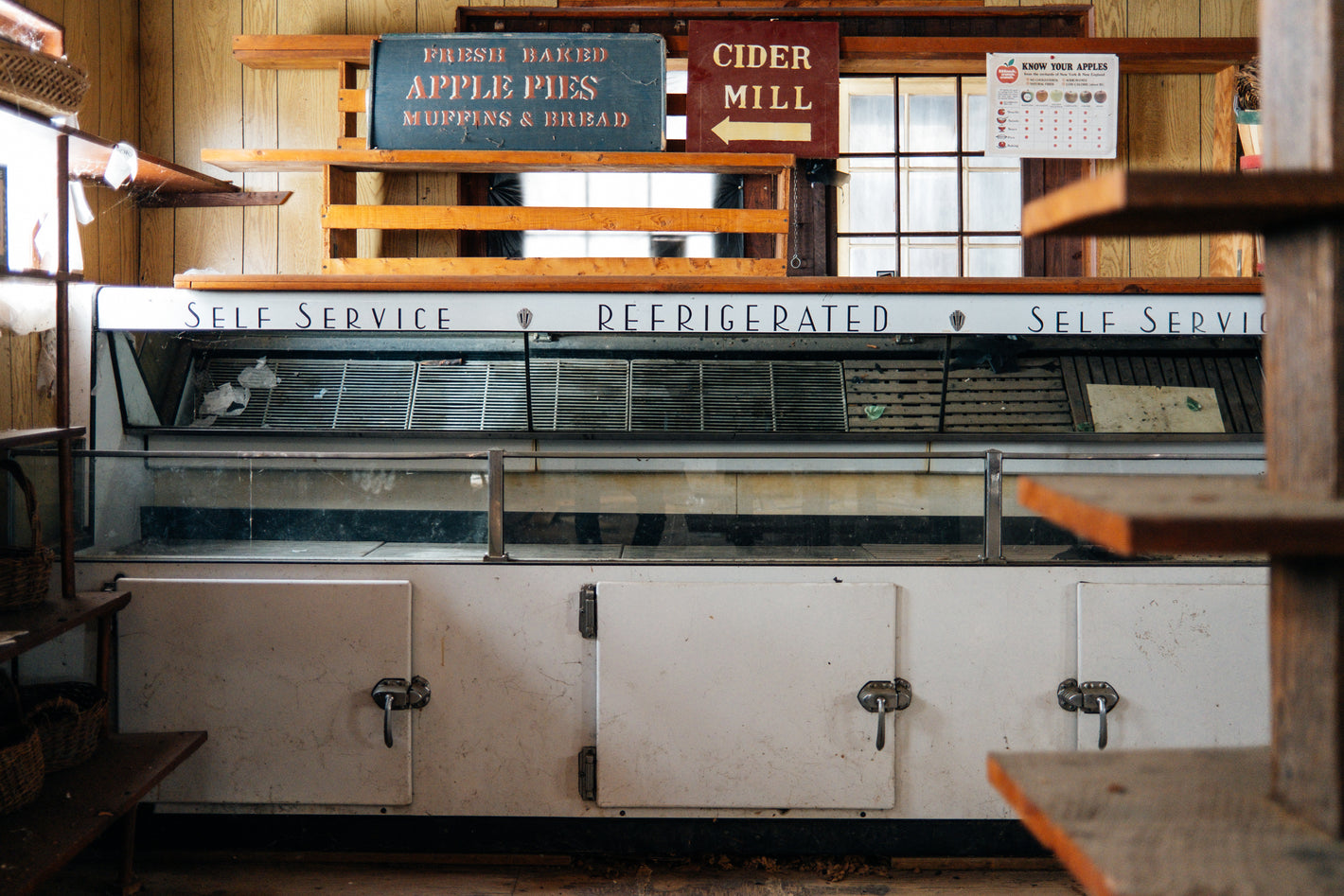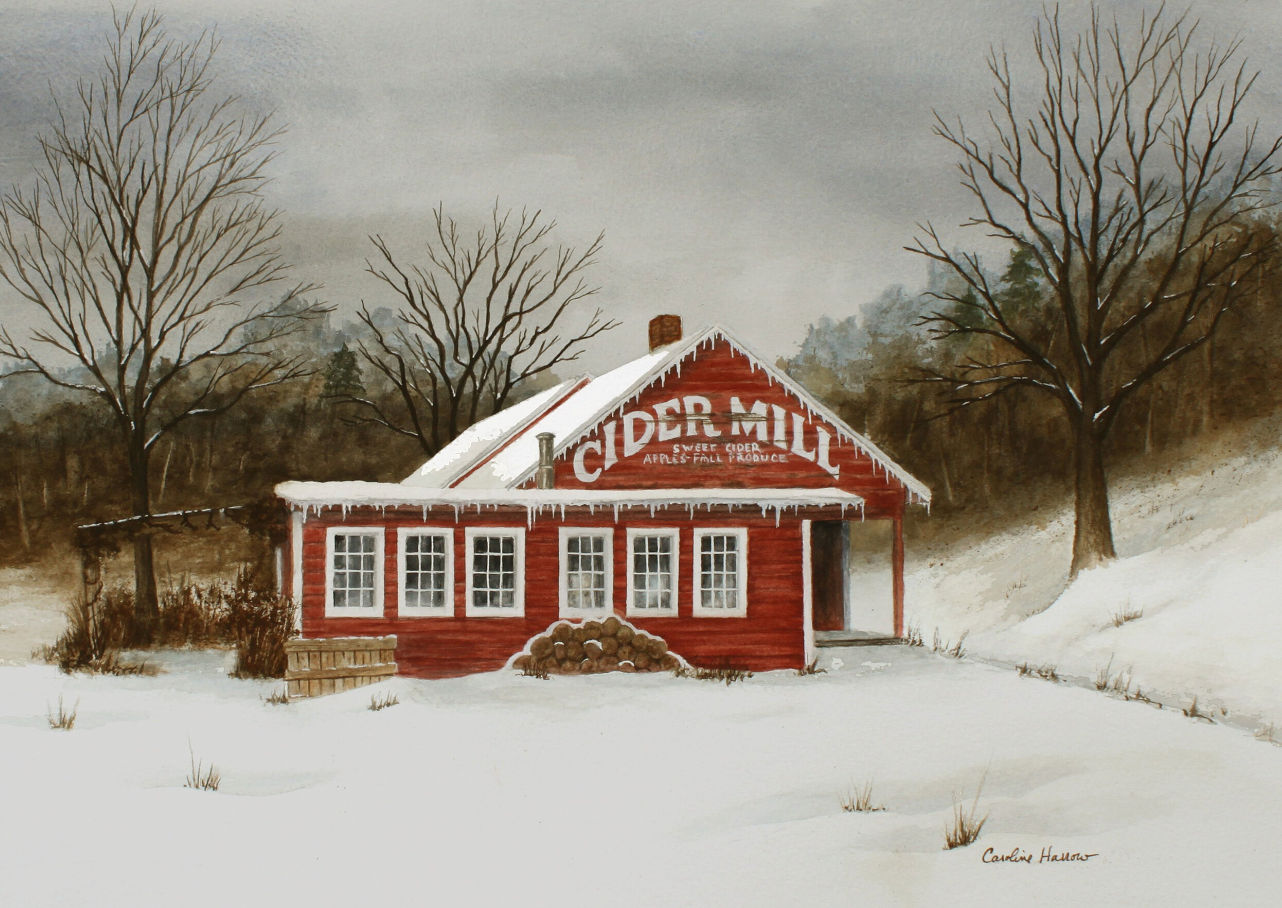THE HISTORY OF NORTH BRANCH CIDER MILL
THE STORY OF THE NORTH BRANCH CIDER MILL
AND OF THE FRUIT THAT ONCE MADE SULLIVAN COUNTY FAMOUS
Apples and apple cider have been a part of life in Sullivan County since the early pioneer days, and the historic North Branch Cider Mill represents a rare living link to this longstanding tradition.
Written by Darrell Hartman
THE EARLY DAYS OF NORTH BRANCH
A town with apples at its core.
The original European settlers of the early 19th century were German and Swiss-German farmers who considered it only sensible to cultivate apple trees on their property. Many of them planted whole orchards.
From the annual fruit harvest they created apple-schnitz (dried slices of apple) for cooking. Another practice brought over from the motherland was the production of hard cider, which farmers did at home by leaving apples to partly ferment in water. Many 19th-century Sullivan County households would put a dozen barrels of the stuff in the cellar every fall.
During winters especially, they were often glad that they had. In 1953, an old-timer Sullivan County Record columnist recalled hearing about a farmer from the previous century who always sat and read at home while sipping from a small pitcher of homemade hard cider. The writer guessed that this had once been a typical practice, and that “in some instances I’m sure the reading was omitted.”
Using special kettles, or stills, home distillers also produced more potent applejack and apple brandy. Technically, this was illegal, but until Prohibition, when some enterprising Sullivan County “moonshiners” made a killing by expanding operations, it was almost always done on a smaller scale.
Around the turn of the 20th century, apples were big business in western Sullivan County, and the area was famous for them. North Branch alone had several successful apple operations. The biggest of these was owned by the Schmidt family, who built a two-story warehouse and factory at Callicoon Station in 1903 and shipped their apples—as many as 168 railroad cars of them each fall—to nearly every state in the Union.
THE BIRTH OF NORTH BRANCH CIDER MILL
An agricultural operation started by the Ebert family.
In 1942 John W. Ebert opened the North Branch Cider Mill. Ebert, the grandson of one of the area’s early German settlers, built the mill on the site of an old cooperage and operated it 6-8 weeks every fall to supplement the income he earned from raising chickens and cattle. He made both “sweet” (non-alcoholic) and hard cider from apples he’d bought locally. He also did custom work for local farmers, for whom bringing bushels of apples down into North Branch village on Saturdays for pressing became an annual fall ritual.
Ebert’s hydraulic press was powered by a 1929 Chevy motor and capable of producing enough juice every hour to make 250 gallons of cider, or 40 barrels a day. The walls where painted white and his cider-making operation struck customers as very modern and sanitary. Most up-to-date of all was the fact that it was licensed.
THE MAKING OF A MAJOR LOCAL ATTRACTION
Under new ownership, the cider mill became a major visitor attraction in the 70s.
The North Branch Cider Mill passed to a new generation in 1973 when it was acquired by an English couple, Adam and Joanna Giffard. The Giffards worked in film and television, Joanna as a sound technician and Adam as a cameraman whose previous work included several National Geographic specials..
They had originally planned to move into a Catskills farmhouse and add a cider press. Instead, they bought the North Branch Cider Mill and renovated the old barn next to it and lived there.
It was the last cider mill in North Branch at this point, and beginning to feel quaintly old-fashioned. The Giffards turned it into an attraction, opening the mill to the public so that visitors could come from far and wide to watch its curious apple-crushing contraption at work, with all its belts and pulleys. The freshly made sweet cider was also a big draw too. The Giffards charged $1.70 for a jug of it, or $1.50 if you brought your own growler. If you were throwing a party, you could pay $20 for a 42-gallon barrel. The Giffards kept up the tradition of custom pressing and producing hard cider commercially, something that only one other mill in New York State was doing at the time.
As well as the press they added a country store and cafe selling an eclectic mix of items carefully curated by Joanna. Foods included local jams, honeys and syrups as well as confectionary much beloved by kids in the local area. This enterprise later expanded into a veritable bazaar of home goods, plants and decor.
NEW OWNERS, A PRESIDENTIAL VISIT, & MORE CIDER (FOR A WHILE)
The mill passed to two of its employees who hosted its most famous visitor.
Sam and Rob Bernthal, brothers from Pennsylvania, went from employees at the mill to its new owners in 1986 when they aquired the property and business from the Giffards. The good looks and charm of the popular Bernthals lasted longer than their ownership.
Brooklyn natives Dan and Katherine Sullivan acquired the cider mill from them in 1990. Four years later, the Sullivans hosted the mill’s most famous visitor: ex-president Jimmy Carter, who came through North Branch that year while on a mostly fly-fishing-related visit. Their tenure lasted four years when Brooklyn natives Dan and Katherine Sullivan acquired the cider mill in 1990. Shortly after they hosted its most famous visitor: ex-president Jimmy Carter, who visited the area for mostly fly-fishing-related purposes in 1994.
They continued to press every fall, and the store did a brisk business in Christmas trees, wicker baskets, and decor items during the holiday season before closing for winter break and reopening in spring. Forced to move closer to hospital treatment for Katherine, they closed the business in 1999.
A BELOVED BUSINESS SITS DORMANT FOR ALMOST 25 YEARS
After an unsuccessful attempts to sell, the cider mill sat just as it was left.
Dan Sullivan tried and failed to find a buyer for the mill.The little red building sat untouched for more than two decades, a picturesque sight for those driving in and out of North Branch—an inactive reminder of the area’s agricultural past and, for many locals, of happy childhood memories.
Until one spring day in 2021 when Dan Sullivan got a knock on his door from us...

